The white dotted leaves and bright flowers make the trout begonia a very attractive houseplant.
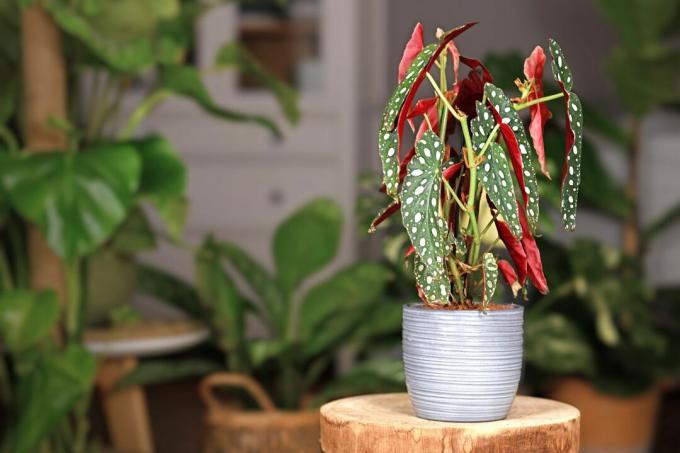
To enjoy the full splendor of the trout begonia (Begonia maculata) to be able to admire, it is worthwhile to adhere to all maintenance measures. You will learn the most important things about the correct location and everything that goes with it in this article.
contents
- Trout begonia: flowering, origin and characteristics
- The most beautiful varieties
- Plants and location of the Begonia maculata
-
Care of the trout begonia
- Properly cut, water and fertilize trout begonia
- Common grooming problems
- Propagate trout begonia
- Is the trout begonia poisonous?
Trout begonia: flowering, origin and characteristics
The unusual and shrubby trout begonia from the begonia family (Begoniaceae) originally comes from the tropics and grows in the forests of Brazil.
The dark green, lanceolate leaves of the exotic flowering plant can, depending on the incidence of light, also shimmer metallic and thus evoke an association with the scale pattern of the trout. The reddish underside of the leaves creates a great contrast and makes the plant unmistakable. The typical, asymmetrical leaves of the trout begonia sit on sturdy stems and have a thick layer of wax to protect themselves from too much water loss through evaporation. The houseplant is also known as polka-dot begonia, which indicates the round polka dots on the leaf.
The flowers of the trout begonia are white to light pink and hang in clusters from the plant. They divide into male and female flowers because the trout begonia is monoecious. The male flowers are slightly smaller and have the stamens. The more conspicuous, female flowers have the carpels. The main flowering season extends from spring to summer. In indoor culture, the trout begonias are usually between 20 and 40 cm wide and 30 to 80 cm high. The growth form is upright to slightly overhanging.

The most beautiful varieties
There are only a few varieties of trout begonia:
- Begonia maculataˈWightiiˈ: This variety is characterized by its bright red undersides of the leaves. The white dots on the leaves stand out against the dark green. It becomes about 40 to 50 cm high and grows slightly overhanging.

- Begonia x albopicta: The white-spotted begonia is actually a hybrid Begonia maculata and Begonia olbia.

Tip: In the genus Begonia there are other species that look very similar to the trout begonia. These include, for example, the pink-red-flowered angel-wing begonia (Begonia coccinea) and the red-blooded coral begonia (Begonia corallina). The coral begonia, however, is probably a subspecies of the trout begonia - taxonomists still disagree on that. Often you can also find dwarf trout begonias, which are sometimes sold under the name ‘Dotty’. However, these are not real breeds, but artificial, mostly chemically compressed plants that, with normal care, show the same development as the normal species.
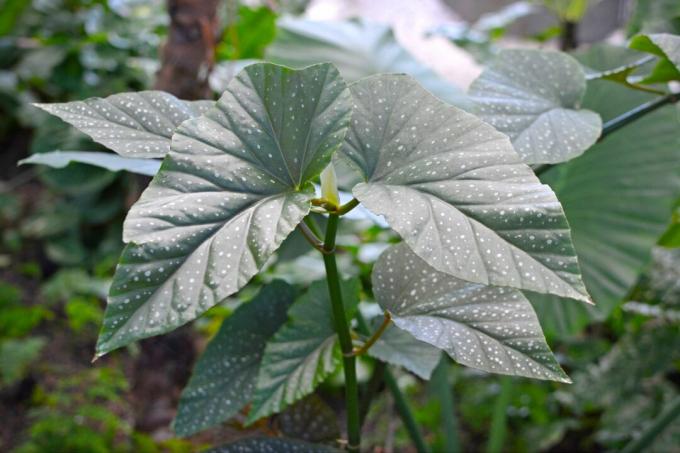
Plants and location of the Begonia maculata
The optimal location for the trout begonia is in a bright place without direct sunlight. The houseplant prefers a warm and humid climate with temperatures of around 20 to 22 ° C. In winter months, the plant can also be a bit cooler at around 15 to 18 ° C. In addition, the trout begonia loves high humidity. Avoid a room with dry air. A place in the bathroom, for example, is a place where she feels particularly comfortable. However, the heat-loving plant should not be in a place with cold drafts.
In order to provide the trout begonia with the right nutrient medium, it must be ensured that it is potted in a loose, air-permeable and humus-rich substrate. Value should be placed on high quality soil. For example, ours is very suitable Plantura organic universal soilwhich is peat-free and meets the nutritional needs of the trout begonia in the first year after planting. It is best to mix this with 30% expanded clay in order to ensure good permeability and avoid waterlogging.
Can the trout begonia be put outside? As long as the plant is in a sheltered place without direct sunlight and so are the temperatures Do not drop below 15 ° C at night, there is nothing to prevent the trout begonia from getting out in the fresh air put. Between May and October you can use the trout begonia to beautify your garden and enjoy the better growth thanks to the outdoor conditions.
Care of the trout begonia
The tropical houseplant is relatively undemanding and is therefore easy to care for. You have to develop a little sensitivity for the right amount of water when pouring.
Properly cut, water and fertilize trout begonia
The trout begonia does not like extreme drought and neither does waterlogging. The root ball can be largely dry between watering - but it must not be completely dry! It is best to prick the substrate a few centimeters deep with your finger: if it already feels very dry, you can pour again. Begonia maculata Because of its origin, loves the air humidity and can be misted a little with spray water like in the rainforest - preferably around the plant instead of directly on the leaves.
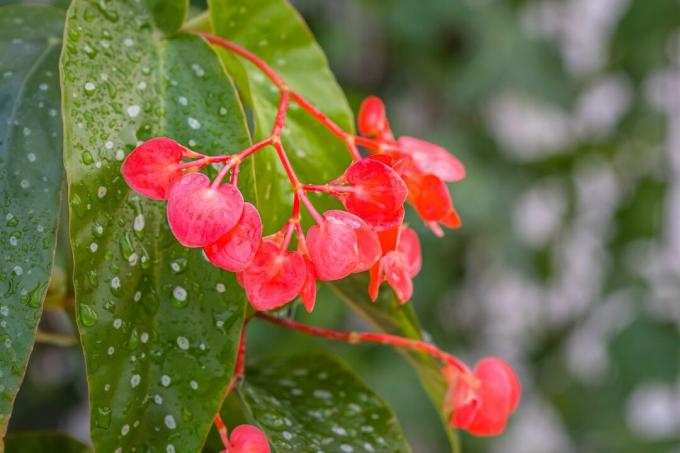
During the growing season, it is advisable to use a liquid fertilizer every two to four weeks to provide the trout begonia with extra nutrients. For example, our primarily organic one is suitable for this Plantura organic indoor & green plant fertilizer especially good. Thanks to its potassium-accentuated composition, it ensures strong leaves and compact growth.
The trout begonia can be shortened and cut back as required. The removed parts can also easily be used for propagation. The trout begonia is cut above the stem knot. In these places there are sleeping eyes from which the houseplant sprouts again. Regular stripping makes it bushier in growth.
notice: Since the trout begonia tends to grow quickly, it should be repotted once a year in fresh soil with a drainage layer. Ideally, this is done in the spring.
Hibernate the trout begonia: In winter, the houseplant should be in a bright place at a temperature between 15 and 18 ° C - preferably not in the immediate vicinity of the heater. The watering can be reduced a little at this time and occasional misting with water is also beneficial for the trout begonia in winter.
Common grooming problems
It is not always easy to pinpoint the cause when the trout begonia is obviously not doing well. We will now name common problems and explain how they come about.
- Trout begonia is losing leaves: An unfavorable location, drafts, temperatures below 15 ° C or excessively warm temperatures above 22 ° C can cause the trout begonia to shed leaves. It is then important to change location or adapt the conditions. Waterlogging, dryness and low humidity in the room can also lead to leaf shedding. In the event of waterlogging, the watering should be reduced and most of the soil should be dried off in the meantime. Fogging with water can help against drought and low humidity and a change of location if the trout begonia is near a heater.
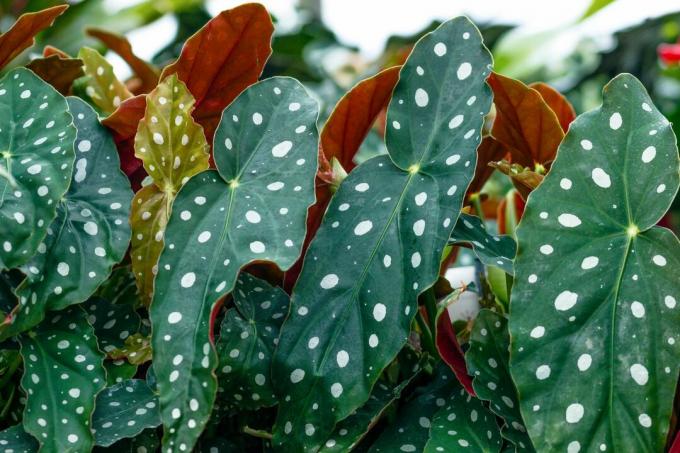
- Trout begonia does not bloom: With optimal location conditions, the South American can bloom as a houseplant for several months. If these are followed, there shouldn't be much of a problem, as the trout begonia usually blooms reliably. A radical pruning can also be the cause of the failure to flower.
- Trout begonia has dry tips: There are also various possible causes for this phenomenon: low humidity, lack or excess of nutrients and damage from pesticides can be reasons for dry, brown tips on the leaves of the trout begonia being. As already mentioned, ensure that the air humidity is appropriate by using a mist or a humidifier. In the case of over-fertilization, the plant should definitely be transplanted into new substrate and it is best to carry out regular organic fertilization - the risk of over-fertilization is lower here. Nutrient deficiencies can be avoided by observing the fertilization intervals already mentioned.

Propagate trout begonia
Trout begonias can be propagated very well with head cuttings. In principle, the propagation of the houseplant works all year round, but ideally it is carried out in spring. For this purpose, about 10 cm long shoot tips without flowers are cut off below a leaf knot. The cutting can then be placed in a glass with water in a warm, light place with a temperature of around 20 ° C. The cuttings are planted in a pot with the recommended soil as soon as a sufficient number of stable roots have formed.
Another promising type of propagation is via basal stem cuttings. Here, a side shoot of the trout begonia including the basal attachment point is used, because there are usually several sleeping eyes and roots can easily form. The shoot with its attachment point is removed from the main shoot and then treated in the same way as the head cutting.
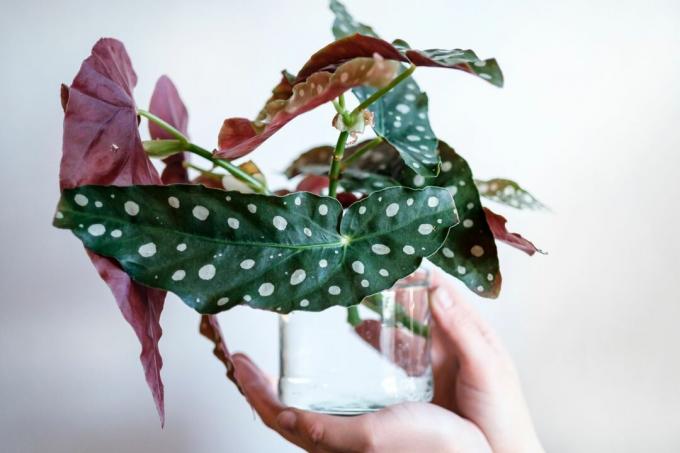
Is the trout begonia poisonous?
The juice of the trout begonia, which is found in all parts of the plant, is classified as toxic due to the oxalic acid and calcium oxalate it contains. Contact with the sap can cause reddening of the skin, irritation of the mucous membranes, diarrhea, vomiting and shortness of breath. Therefore, hands should be washed thoroughly after any contact with the juice. This prevents the substance from entering the eyes or mouth unconsciously. Trout begonia is also classified as poisonous for pets such as dogs, cats, small mammals and birds.
If you love easy-care and water-saving houseplants, this is it Cat ear (Kalanchoë tomentosa) maybe just the right new love affair for you.
